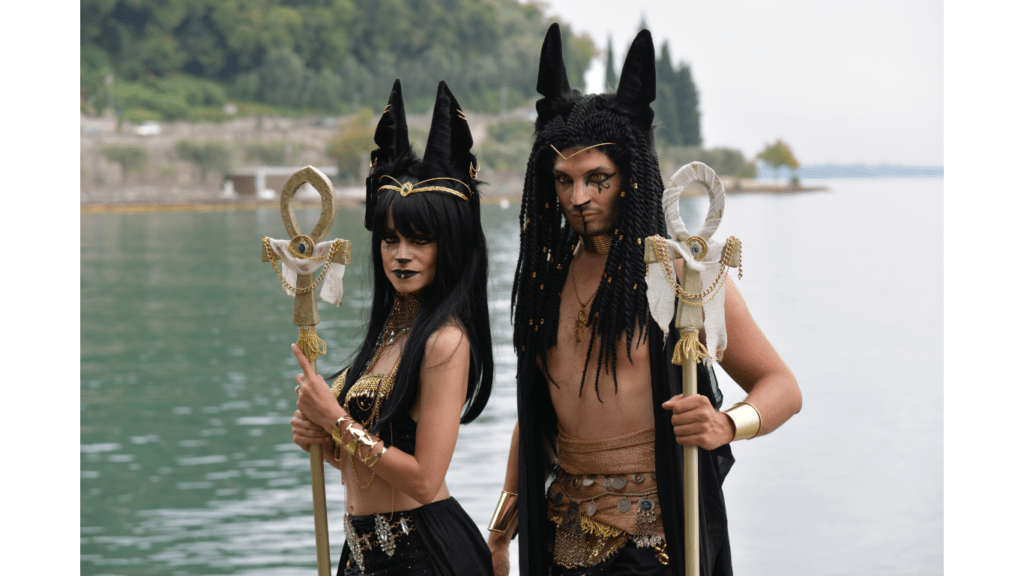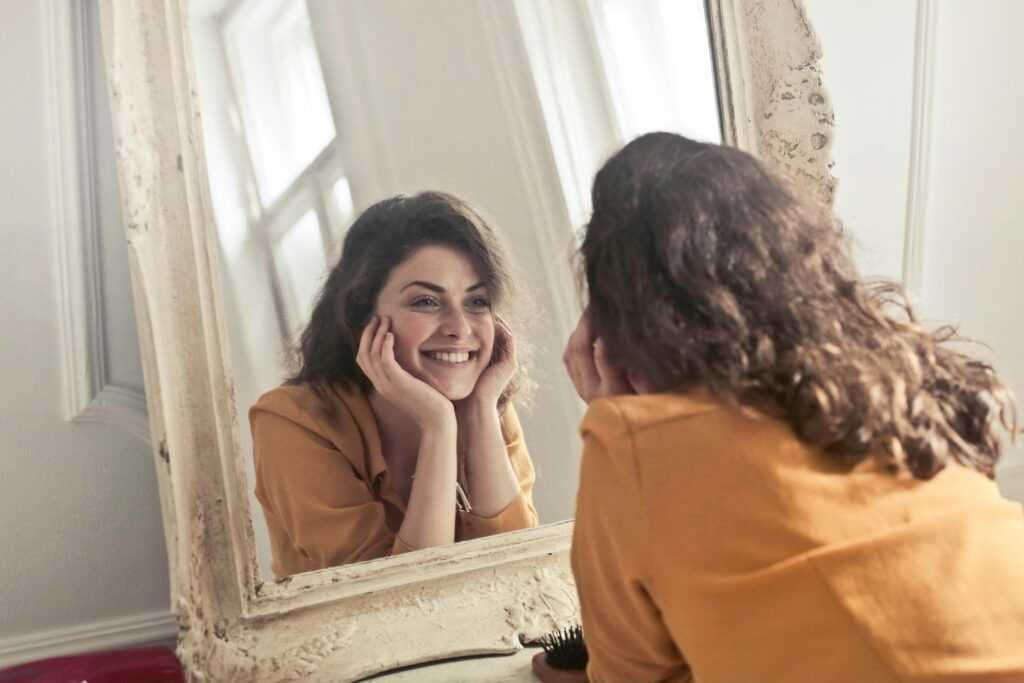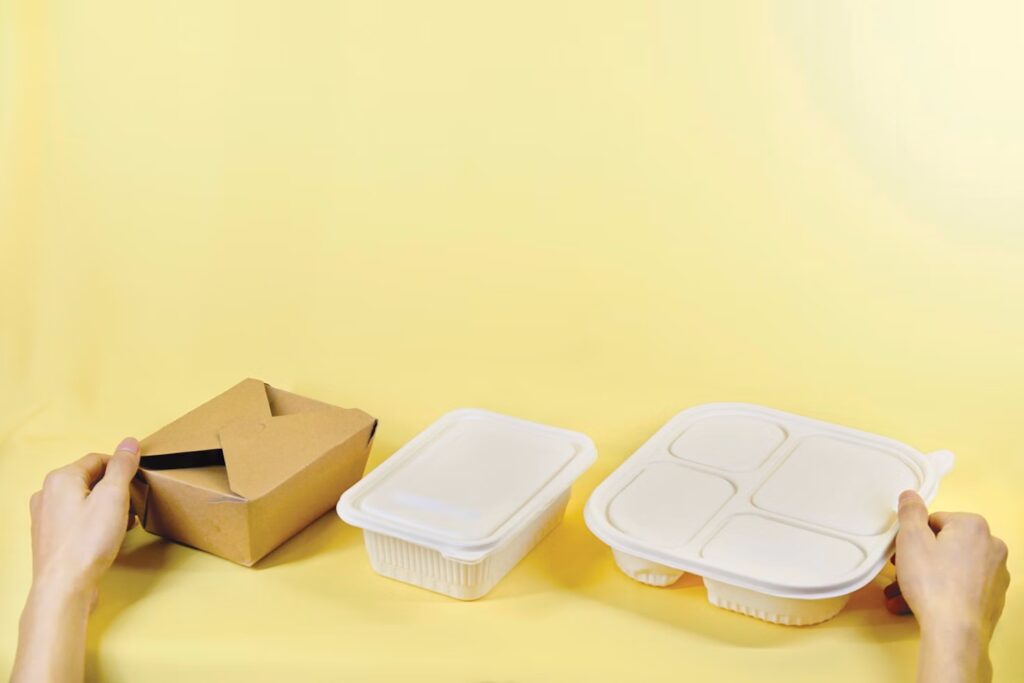The Origins of Makeup in Ancient Civilizations
The Egyptian Influence
The ancient Egyptians were pioneers in the use of makeup for both aesthetics and symbolic rituals. They believed that makeup had magical powers to protect against evil spirits and promote good health. Egyptians used various natural ingredients like malachite and kohl to create striking eye makeup that enhanced their features and had symbolic significance in religious ceremonies.
Makeup in Ancient Rome and Greece
In ancient Rome and Greece, makeup became intertwined with social status and cultural practices. Both men and women used cosmetics to signify their wealth and social standing. Lead-based face powders, chalk, and plant-based dyes were commonly used to achieve the desired look. Makeup application was not only a beauty ritual but also a way to honor the gods and enhance theatrical performances.
Cultural Shifts in Beauty: Middle Ages to the Renaissance
1. The Pale Complexion Craze
In the transition from the Middle Ages to the Renaissance, a significant cultural shift in beauty standards emerged. During the Middle Ages, pale skin was associated with nobility and wealth due to the belief that fair complexions were a sign of not engaging in outdoor labor, which was common among the lower classes. As a result, individuals sought to achieve a pale complexion through various means, including the use of lead-based white makeup.
The use of lead-based white makeup, known as Venetian ceruse, became popular among the aristocracy and upper classes. Venetian ceruse was a mixture of vinegar and lead that created a stark white pigment when applied to the skin. Despite its toxic nature and the health risks it posed, including skin damage and hair loss, the pursuit of a pale complexion persisted as a symbol of beauty and social status.
2. Cosmetic Contraband in the Victorian Era
The Victorian Era brought about notable changes in attitudes towards makeup and beauty. Queen Victoria’s reign saw a shift towards more modest and natural beauty ideals, contrasting with the heavily made-up looks of previous centuries. Makeup was frowned upon by society, associated with actresses, prostitutes, and lower-class women, leading to its condemnation and restriction.
Cosmetics during the Victorian Era were often considered scandalous, with the use of makeup seen as deceptive and morally questionable. The prevailing belief was that a woman’s natural beauty should shine through, and excessive use of cosmetics was viewed as inappropriate and vulgar. Despite societal disapproval, some women continued to use cosmetics discreetly, leading to an underground market for beauty products and the emergence of cosmetic contraband.
Throughout the Middle Ages to the Renaissance and into the Victorian Era, societal perceptions of beauty and makeup underwent significant transformations, reflecting the cultural values and norms of each period. These shifts not only influenced beauty standards but also shaped attitudes towards self-expression and individuality in the realm of cosmetics.
The Dawn of Modern Makeup
The Roaring Twenties and Cosmetic Liberation
- In the Roaring Twenties, makeup underwent a revolution, with bold changes in beauty trends. During this era, characterized by prosperity and cultural dynamism, makeup became a symbol of liberation and empowerment for women. Dark, dramatic eyes, vibrant red lips, and a porcelain complexion became the epitome of fashionable beauty. The shift in societal norms towards women’s independence and freedom was mirrored in the liberating trends of makeup, as women embraced cosmetics as a form of self-expression and confidence.
Hollywood’s Golden Age and Its Impact
- Hollywood’s Golden Age, spanning from the 1920s to the 1960s, played a pivotal role in shaping beauty standards and popularizing makeup trends globally. The silver screen icons of the era, such as Marilyn Monroe, Audrey Hepburn, and Elizabeth Taylor, became synonymous with glamour and sophistication, influencing millions with their signature makeup looks. The flawless skin, winged eyeliner, red lipstick, and perfectly coiffed hair of these Hollywood stars set the benchmark for beauty ideals of the time.
- My historical exploration of makeup evolution reveals how the Roaring Twenties and Hollywood’s Golden Age marked significant milestones in the transformation of makeup from a symbol of rebellion and freedom to a tool for enhancing beauty and exuding elegance.
Technological Advancements and Ingredients
The Rise of Synthetic Compounds
Exploring the realm of makeup advancements, the introduction of synthetic compounds marked a significant shift in the industry. Innovations in the development of artificial ingredients revolutionized the formulation of makeup products, offering enhanced durability, consistency, and versatility. Synthetic compounds, such as silicones, polymers, and preservatives, play a crucial role in modern cosmetics. They contribute to long-lasting wear, smooth application, and preservation of product quality, meeting the evolving demands of makeup enthusiasts worldwide.
The Natural and Organic Movement
In a contrasting approach, the emergence of the natural and organic movement in makeup signifies a return to nature-inspired ingredients. Consumers are increasingly drawn to products formulated with botanical extracts, essential oils, and plant-based components. The shift towards natural and organic makeup aligns with the rising preference for clean beauty, emphasizing sustainability, eco-friendliness, and health-conscious choices. Brands are harnessing the power of nature to provide skincare benefits, vibrant pigments, and a greener alternative to traditional cosmetics, catering to the growing eco-conscious market.
Makeup as a Form of Expression

The Bold and Colorful Sixties
- In the 1960s, makeup took a vibrant turn, reflecting the dynamic cultural shift of the era. Bold and vivid colors became the norm, with eyes adorned in bright blues, greens, and pinks, and lips painted in striking shades. The makeup trends of the Sixties represented a departure from the subdued elegance of previous decades, embracing a more avant-garde and playful approach to beauty. Icons like Twiggy popularized the doe-eyed look, characterized by heavy mascara and exaggerated eyelashes that became synonymous with the era’s fashion and makeup styles.
Contouring and the Digital Age
- With the advent of the digital age and the rise of social media influencers, contouring emerged as a defining makeup technique. Contouring involves using darker and lighter shades to sculpt and enhance facial features, creating a more defined and chiseled look. Popularized by celebrities and makeup artists on platforms like Instagram and YouTube, contouring has become a mainstream practice in modern makeup routines. The digital age has democratized beauty standards, allowing individuals to learn and experiment with makeup techniques through online tutorials and social media platforms, fostering a culture of self-expression and creativity in the realm of cosmetics.
The Business of Beauty: Brands That Shaped the Industry
Pioneering Brands and Their Legacies
- Exploring the landscape of makeup history reveals the pivotal role played by pioneering brands in shaping the cosmetics industry. From iconic household names to groundbreaking innovators, these brands have left an indelible mark on beauty standards worldwide. Brands like Max Factor, founded in the early 20th century, revolutionized makeup for film and everyday use, popularizing concepts like lip gloss and foundation. Estée Lauder, another powerhouse, introduced luxury skincare and makeup products, setting new benchmarks for beauty excellence. MAC Cosmetics, known for its inclusive approach to makeup artistry, redefined beauty norms by catering to diverse skin tones and preferences. These brands’ legacies continue to influence the industry, driving innovation and setting trends that resonate through generations.
The Surge of Indie Makeup Brands
- In recent years, the beauty industry has witnessed an explosion of indie makeup brands challenging traditional norms and redefining beauty standards. Independent makeup labels like ColourPop, known for their vibrant colors and affordable prices, have gained immense popularity among makeup enthusiasts. Pat McGrath Labs, founded by the renowned makeup artist Pat McGrath, has carved a niche for itself with high-quality, avant-garde products that push boundaries and spark creativity. Brands like Fenty Beauty, launched by singer Rihanna, have championed inclusivity by offering a diverse range of shades to cater to all skin tones. These indie makeup brands have disrupted the market, emphasizing diversity, self-expression, and authenticity, reshaping the beauty landscape with their innovative products and inclusive philosophies.
Makeup in the 21st Century: Trends and Innovations
The Influence of Social Media
In the 21st century, social media has been a driving force behind makeup trends and innovations. Platforms like Instagram, YouTube, and TikTok have provided a stage for beauty influencers and makeup artists to showcase their talent, share tutorials, and introduce new techniques to a global audience. These influencers have popularized trends such as contouring, highlighting, and bold lip colors, shaping the way makeup is perceived and applied by individuals worldwide.
The Push Towards Inclusivity and Diversity
One of the notable shifts in the makeup industry in the 21st century has been the emphasis on inclusivity and diversity. Many beauty brands have expanded their shade ranges to cater to a more extensive spectrum of skin tones, ensuring that individuals of all backgrounds can find products that match their unique complexion. This push towards inclusivity has not only made makeup more accessible but has also promoted a sense of representation and empowerment within the beauty community. Brands like Fenty Beauty, known for its extensive foundation range, have set a new standard for inclusivity in the cosmetics industry, encouraging other brands to follow suit and celebrate diversity in beauty.


